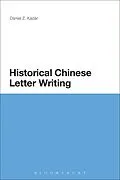Dániel Z. Kádár was awarded with the Academy Award for Young Outstanding Scholars by the Hungarian Academy of Sciences for this book. Letter writing is a pivotal yet neglected medium of historical Chinese communication. The epistolary format is key to sinological research. As historical letters have a specific vocabulary and rhetorical structure it is difficult to read them without the supporting apparatus of specialised study. This compendium fills the gap in Chinese studies by providing a bilingual Chinese-English edition of a corpus of Chinese letters, prepared for advanced students of Classical Chinese as well as academics with an interest in historical Chinese epistolary art. The book has a broad and general introduction, systematically constructed vocabulary sections as well as detailed grammatical and philological explanations. It focuses on Qing Dynasty (1644-1911) letter writing, a high point of pre-1911 epistolary activity in Chinese, and will appeal to Chinese scholars and Sinologists at a broad range of academic levels.
Autorentext
Inhalt
Preface
Part I: Family Letter Writing
1.Family Letter Writing I: Letters of Zheng Banqiao
2. Family Letter Writing II: Letters of Zeng Guofan
Part II: 'Specialized' Epistolary Discourse
3. 'Specialized' Epistolary Discourse I: Literary Letters of Jin Shengtan
4. 'Specialized' Epistolary Discourse II: Scholarly Letters of Gu Yanwu
Part III: Non-family 'Social' Letter Writing
5. Non-Family 'Social' Letters I: Letters of Xu Jiacun
6. Non-Family 'Social' Letters II: Letters of Gong Weizhai Joint Exercise for Chapters 5 and 6
Part IV: Political Letter Writing
7. Political Letters: A Long Letter of Yuan Shikai
Postscript: What next?
Appendix I: The Chinese Texts (printed in a punctuated form) Appendix II: Chronological List of Chinese Dynasties Glossary of Epistolary Expressions, Honorifics and Grammatical Words
Index
